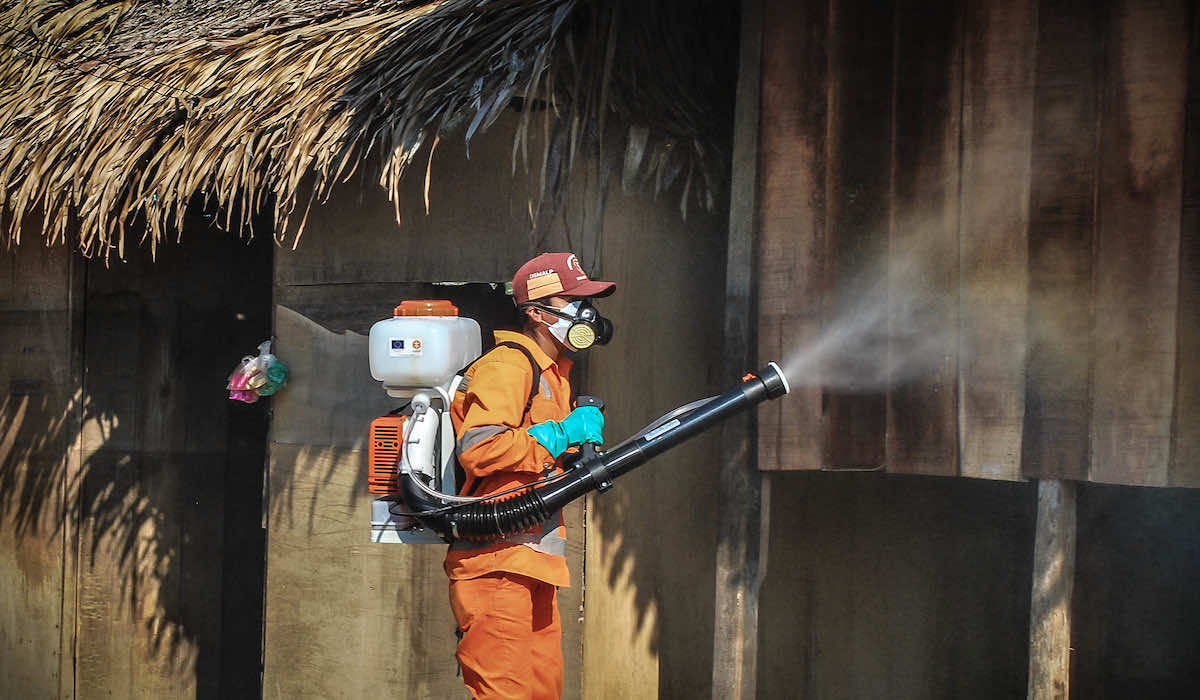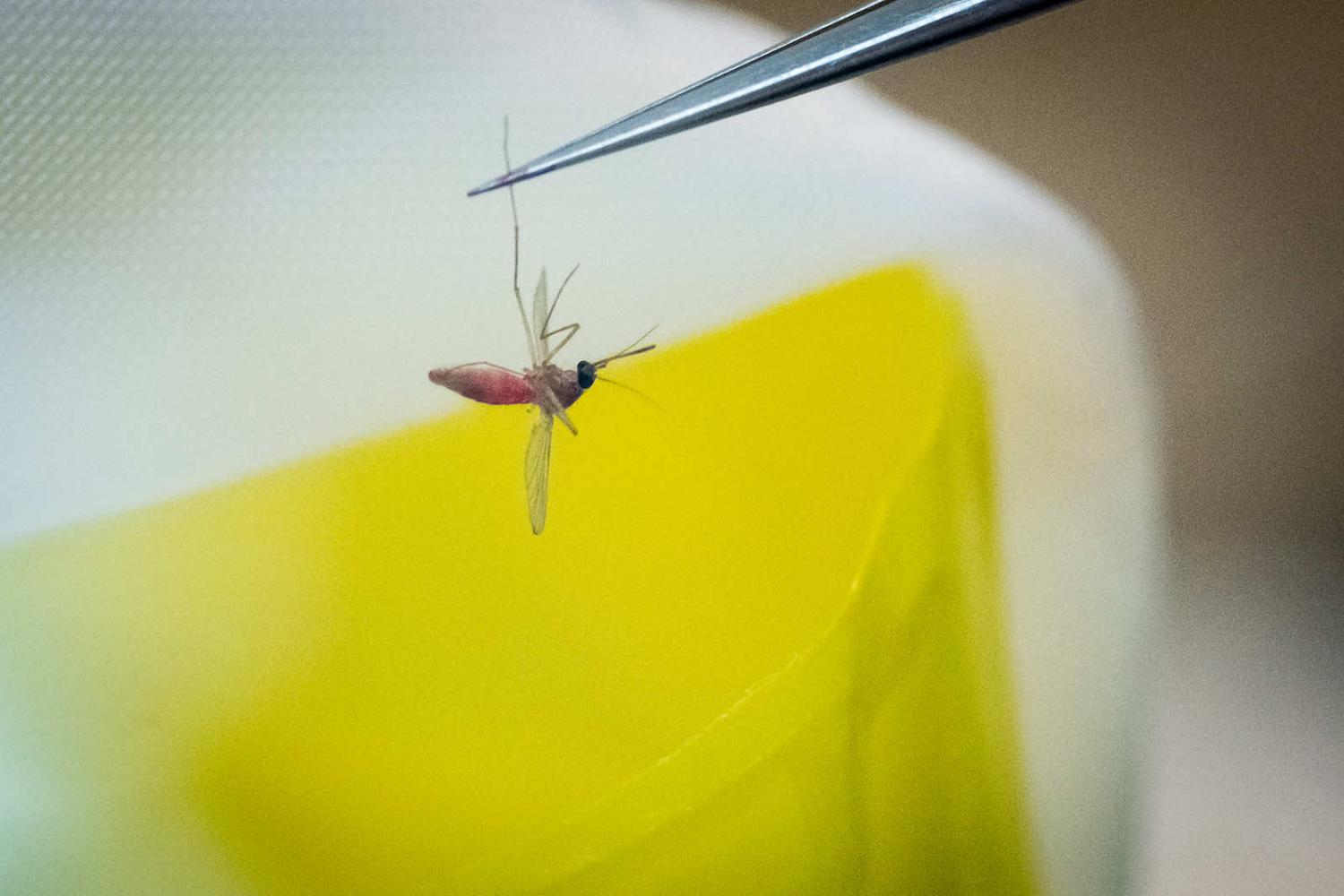Mosquitos currently kill more than a million people each year. Diseases such as malaria, dengue fever and Rift Valley fever and Zika virus borne by these irritating insects are estimated to affect up to 1 billion people in 109 countries across Africa, Asia and Latin America. Increased rainfall, humidity and temperatures due to climate change may affect the transmission dynamics, geographical range and socioeconomic drivers of mosquito-borne diseases.
Yet there are ongoing arguments in the scientific community about the relative impact of climate change as opposed to other health and economic factors on disease risk.
When a mosquito bites a human, they can transmit a pathogen which causes disease. In 2017 malaria killed approximately 620,000 people, mostly in Africa, while dengue killed 40,500, mostly in Asia. Other non-fatal mosquito borne diseases can cause chronic conditions which affect millions of people.
Mosquitos and their pathogens typically prosper in warmer weather. Both mosquitos and the pathogens that infect humans with disease increase more or less exponentially with rising temperatures or increased rainfall, up to a certain limit, where they begin to decline, after been blasted by extreme temperatures over 36°Celsius or flushed out by heavy rains. While droughts reduce rainfall, drying stagnant pools of water or water storage indoors make optimum breeding grounds for mosquitos.
Public health systems that have little experience with mosquito-borne diseases must be prepared contain and prevent them.
In Colombia and Venezuela, malaria cases increased by 35 per cent following dry conditions associated with the El Nino weather cycle. The pathogens that cause disease may also be affected by changing climatic conditions, breeding more frequently and in greater numbers.
From 2010–18 rates of transmission of mosquito-borne diseases such malaria were in decline in many areas of the world. However, rates of transmission of dengue fever have been increasing substantially. Dengue is now endemic in more than 120 countries.
In July this year, medical journal The Lancet published a study that claimed the geographic spread of mosquito-borne diseases is expanding. These diseases are emerging in new places and re-emerging in areas where they had been eradicated or where they had subsided. The Lancet study found that by 2070 the population at risk of malaria and dengue fever may increase by up to 4.7 billion additional people, relative to 1970–99. It claimed that the geographic spread and length of the season would increase for both diseases, posing a particular threat to people living in lowland areas and in cities in Africa and Southeast Asia.
In 2019 another modelling study looked at the impact of four climate change scenarios from an increase in average global temperatures under 2°Celsius to up to 5°Celsius on the transmission of dengue fever, Zika, yellow fever and chikungunya. If the planet were to warm up to 5°Celsius, it argued, almost 1 billion more people could be exposed to mosquito-borne diseases for the first time by 2080. There is some evidence to indicate a shift is already happening, as the distribution of malaria moves towards higher altitudes in warmer years in Colombia and Ethiopia.

There are many other factors that influence whether groups of people are afflicted by a disease, however, and it is difficult to isolate the role of climate change as a cause of transmission rates and spread. Economic development, public health preparedness and urbanisation all play key roles in driving case numbers up or down.
A 2020 paper in Nature argued that it was not climate change itself but economic development and public health interventions that were the key drivers of the case rates of most vector-borne diseases in the past decade. Nonetheless the research maintained that there will be an expansion of regions with climate suitable for mosquito-borne diseases and climate change could become a driver in the future. By way of contrast, a quantitative assessment by the World Health Organisation found that climate change could cause an additional 60,000 deaths by malaria from 2030–50, even if there is ongoing economic development and improvement in public health systems.
What is clear from the research is that a warmer and more urbanised world will require new strategies to handle the risk of mosquito-borne diseases. The most obvious strategy is limiting greenhouse gas emissions to stop global warming at no more than 1.5 degrees above preindustrial levels. In addition, there should be increased efforts for prevention and control of mosquito-borne diseases, including surveillance in at risk areas like lowlands and cities.
Public health systems that have little experience with mosquito-borne diseases must be prepared contain and prevent them. Other interventions to limit the impact of mosquito-borne diseases such as the development of vaccines and treatment should also be prioritised. Alongside these actions there will be an ongoing need for research and modelling that takes into account local scale, variations in weather and climate events on the likely impact of climate change on disease dynamics.
And in the last analysis, current and future interventions to prevent an increase in mosquito-borne diseases due to climate change will have to improve both the environmental and living conditions of at-risk populations.

